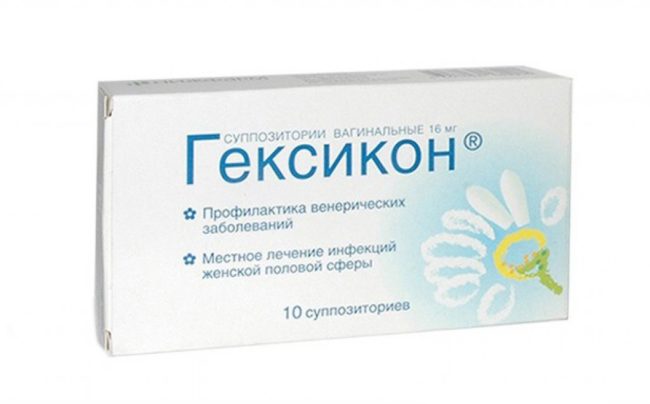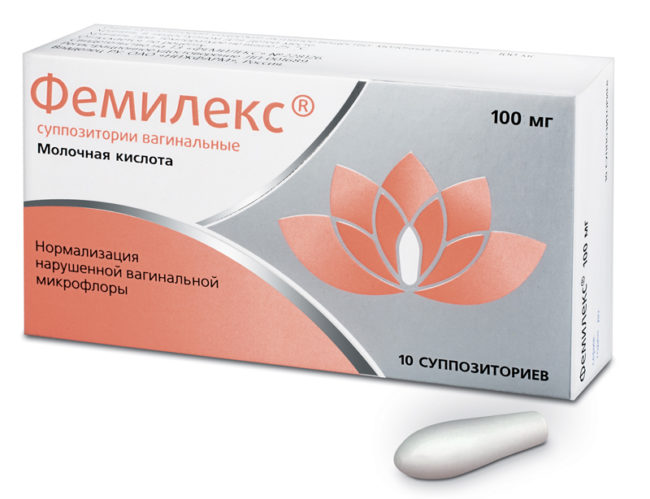Bacterial vaginal vaginosis is an non-inflammatory disease in which the ratio of intimate microflora is disturbed: the amount of lactobacilli is reduced and the number of conditionally pathogenic microorganisms is growing.
Content
Doctors of the old hardening, this condition is often referred to as a gardnerellosis, which is incorrect. Yes, Gardnerella Vaginalis is found in almost all patients with bakvaginosis, but the very fact of the presence of a gardnerella in a woman does not yet indicate a bakevaginosis. And in addition to this bacteria, there are other conditionally pathogenic micro-regulatoryism that can provoke vaginal dysbiosis.
Below we consider the causes of bacterial vaginosis, symptoms of the disease, diagnostic methods and treatment methods.
Bacterial vaginosis - causes
The reasons for the occurrence of bactvaginosis are currently not fully investigated. But it is known for sure that factors can contribute to the development of this disease as:
- Reducing immunity, severe stress.
- Hormonal changes. In the risk zone are women taking hormonal drugs, adolescents, pregnant women, women who have come in menopause.
- Reception of antibiotics. Long -term antibacterial therapy threatens with the death of not only pathogenic microorganisms, but also representatives of healthy microflora of both the large intestine and the vagina.
- The previously suffered disease of the reproductive system, which is inflammatory.
- Recent change of sexual partner.
- Menstrual disorders. Moreover, even healthy in the woman’s gynecology in certain phases of the menstrual cycle have higher risks of collisions with bakvaginosis.
- Benign diseases of the cervix.
- Certain types of contraception: prolonged use of the Navy, candles or lubricants with nonoxinol-9.

Bacterial vaginosis - symptoms
- The main symptom of bakvaginosis is the abundant vaginal separated by white or grayish-white, homogeneous consistency. In a chronic bacterial vaginosis, the discharge can become thicker, acquire a greenish-yellow tint.
- The vaginal separated by bacvaginosis can exude a characteristic smell of fish, intensifying on critical days, after the commission of hygiene procedures or after intercourse.
- Infrequently bacterial vaginosis is accompanied by pain or discomfort during urination, sexual intercourse.
- Sometimes the disease can occur absolutely asymptomatic.

Bacterial vaginosis - diagnosis
Bacterial vaginosis and AMSEL criteria
- Positive aminotest: the fish smell at the discharge, which has before or appeared after the 10 percent solution of potassium hydroxide to the vaginal separates.
- With bacterial vaginosis, the discharge is specific in nature, which is detected during a gynecological examination.
- The hydrogen indicator of the vaginal separated above 4.5, usually 5-6. It is determined by the indicator strip.
- With bacterial vaginosis, the smear contains “key cells”.
Bakvaginosis can be diagnosed to patients in whom 3 points out of 4 coincided.
Bacterial vaginosis and nugntent criteria/New Agent
The Golden Standard in the diagnosis of bakvaginosis is considered to be a system of points designed more than 25 years ago to evaluate three bacterial vaginal morphotypes. The smear from the vagina is painted according to gram, under the immersion system of the microscope, morphotypes are calculated. Depending on their number, points are awarded, the amount of which allows us to estimate the presence and degree of bakvaginosis.
- Normal microflora: 0-3 points.
- Intermediate microflora: 4-6 points.
- Bakvaginosis: 7 or more points.

Bacterial vaginosis and PCR
PCR is not a mandatory component in the diagnosis of bakvaginosis, since the detection of representatives of conditionally pathogenic microflora of the vagina does not mean the presence of bakevaginosis. But this analysis is still recommended to determine the composition of the microflora that provoked the development of the disease.
Bacterial vaginosis and cytological smear
The cytogram of bacterial vaginosis is necessary only if the uterine pathology, the infection, has joined. In other cases, the analysis is uninformative.
Bacterial vaginosis in men
- Men, in view of the differences in the structure of the genitals and the fact that Bakvaginosis does not apply to STDs, cannot hurt bacterial vaginosis.
- If a partner has bacterial vaginosis, sex is not prohibited, provided that other infections have not joined the disease. Sexual intercourse with a woman who has vaginal dysbiosis is fraught with entering the urethra of conditionally pathogenic microorganisms, but, often, they do not show themselves and are excreted with urine in a few days.
- In one of the ten cases, a man becomes a Mardnerell carrier, which contributes to a violation of intimate microflora in his sexual partners from the risk group. Also, Gardnerells who have fallen into the urethra can provoke the development of urethritis. Single cases of diseases by pyelonephritis, prostatitis, epididymitt, cystitis, which developed against the background of a gardnerella in a male body have been recorded.
- In the absence of symptoms, the treatment of sexual partners of patients with bakwaginosis of women is not required.

Bacterial vaginosis during pregnancy
Bakvaginosis during pregnancy must be treated after the first trimester. Otherwise, the risk of developing chorioamniotitis, premature birth, intrauterine infection of the fetus, inflammation of the uterus in the postpartum period and other serious diseases increases significantly.
How to cure bacterial vaginosis
Women suffering from bacterial vaginosis are strongly recommended:
- abandon aggressive intimate hygiene, wearing panties-sting and linen of other styles from synthetic materials;
- abandon the use of daily gaskets, tampons;
- do not wear tight -fitting trousers, especially jeans.
The treatment regimen of bacterial vaginosis includes getting rid of pathogenic microflora and increasing the number of lactobacilli.
Vaginal sanitation with bacterial vaginosis
- Clindamycin -based preparations (clindacil, Dalacin) are orally or vaginally. Do not affect lactobacilli. The use of pregnancy in the first trimester is prohibited. They are not used for the treatment of bacterial vaginosis in women in a longer pregnancy, due to the available data on the relationship of clindamycin and increase the risk of premature birth.
- Most often, drugs based on metronidazole, secinidazole, ornidosole and other Imidazole (Trichopolis, Klion) are orally or vaginal medicines against bacterial vaginosis. These drugs are destructive only for anaerobic bacteria and do not reduce the number of lactobacilli. In the first trimester of pregnancy, the above drugs do not apply, in a later date they are usually prescribed in a reduced dosage.
- Antiseptic vaginally. Typically, a candle is prescribed from bacterial vaginosis (chlorhexidine). The minus of the method is that the active substance adversely affects not only pathogenic microorganisms, but also lactobacilli.

Bacterial vaginosis - drugs to restore flora
In the course of research, the effectiveness of the use of probiotics and prebiotics in the gynecology slightly exceeded placebo, so the appointment of these groups of groups is advisory.
- Probiotics. They retain vitality after passing the gastrointestinal tract and are able to populate the urogenital zone with useful lactobacilli, suppressing the growth of pathogenic flora.
Gynecology often uses the lactobacilli of rampsosus GR-1 vagilak in the form of tablets for oral use, gel for local use and means for intimate hygiene. - Local use of superbiots. These drugs do not contain alien lactobacilli, but contribute to an increase in the number of own lactobacilli. The course of procedures lasts about 10 days.
- Drugs containing lactic acid. Used to normalize the hydrogen indicator of the vaginal medium.

Regardless of the chosen tactics of treatment, the disease recurves about half of the patients.
Bacterial vaginosis - treatment with vaccinations
To combat bacterial vaginosis of any degree or prevention of relapses, a Solcotrichovak vaccine is used to increase the number of dododerdyaine. The drug requires three times with an interval of 14 days. The injection should not be carried out during menstruation. The first revaccination of Solcotrichovak is carried out a year later, the next - every 2 years. The results will be visible 2-3 weeks after the first injection.
Contraindications to vaccination:
- pregnancy, lactation (there are no clinical studies);
- age under 15 years;
- syphilis, gonorrhea;
- HIV;
- kidney diseases, decompensated heart disease;
- hemong system diseases;
- ORZ.

Bacterial vaginosis - folk treatment
Douching from bacterial vaginosis
The method is controversial, due to the fact that useful lactobacilli are also washed out during douching. Douching is usually carried out twice a day in a lying position, and at the end of the procedure it is better to remain in a lying position for another 15-30 minutes. The stream of water should not be strong. Before each douching, the sprint or mug of Esmarch must be boiled.
In case of discomfort when douching, the procedure should be stopped.
- Oak bark. For the procedure, 300 ml of oak bark is used, brewed in a proportion of 1: 5 (1 part of the bark per 5 parts of water). Treatment is carried out until the symptoms of the disease disappeared, on average 7-10 days are enough.
- 2 teaspoons of a 3 percent solution of hydrogen peroxide are diluted into 350 ml of warm boiled water. Douching is carried out by a freshly prepared solution. After the course of procedures, local use of probiotics is recommended.
- Kefir, yogurt is what to treat bacterial vaginosis is prohibited, since in addition to useful bacteria in these products, components negatively affect the flora.
Therapeutic tampons from bacterial vaginosis
Ready-made hygienic or homemade gauze tampons are impregnated with a drug and placed in the vagina for 7-8 hours, optimally-at night.
- Aloe and vegetable oil. The swab is impregnated with aloe and oil mixed in equal proportions.
- Sea buckthorn oil. The swab is saturated with sea buckthorn oil alone. The product has a bright orange color and when it hits linen and clothing leaves difficult to spent spots.
Baths from bacterial vaginosis
In the fight against bakvaginosis, it will not be superfluous to take sedentary baths with the addition of herbal decoctions in the water. The procedure should not last longer than 20 minutes.
- You can add an infusion obtained by steaming 150 grams of chamomile to the water for bathing.
- The property of the walnut leaves possess the property to treat bakevaginosis. To prepare a decoction, it will take 250 grams of leaves.
- You can also mix the bark of oak, chamomile, walnut leaves, oat straw, juniper berries, pour water, put on fire, cover with a lid. Cook the mixture for 45 minutes. Then strain and add to the water for bathing.

Strengthening immunity with bacterial vaginosis
Strengthening the body's protective forces is an important step in the prevention or fight against bakvaginosis. Folk remedies will come here as a very hand.
- Pange 2 cups of cherry berries without bones, add grated unpeeled quince and two apples to them, missed through the press 10 cloves of garlic, chopped lemon without bones. Pour the mixture with 9 glasses of boiling water, cover with a lid. Within half an hour the mixture will be infused, then it should be filtered. The resulting drink is consumed 100 ml 4 times a day.

- 2 tablespoons of dried rowan berries pour 400 ml of water and put on fire. After 15 minutes, add 2 tablespoons of honey to the decoction, turn off the stove after a few more minutes. Grind 2 bulbs, add to a cooled decoction. The resulting mixture is consumed 4 times a day in a tablespoon.

Conclusion
Bakvaginosis is a common sexually transmitted disease. It is dangerous for pregnant women and their future children, so the treatment of future mothers is necessary, but only under the strict control of the doctor.
With a typical course of bacterial vaginosis, the main sign of the disease is the changed nature of the discharge, but this disease can occur without any subjective or objective symptoms.









Comments
a couple of years ago, there was no side of metrogils from the same problem, there were no side effects ...
I’m not a fan of peeling at all, it saves from acne of metrogil, it also smoothes it ...
Great article! ...
I take the second course of the Capsules Climafite 911. The tides went very quickly. It became calmer, irritability went away and I sleep well ...
i also noticed - it is worth nervous, everything immediately affects the face. Therefore, I try to avoid conflicts and unpleasant people. Of the creams, I like Miaflow from wrinkles - smoothes not only small wrinkles ...